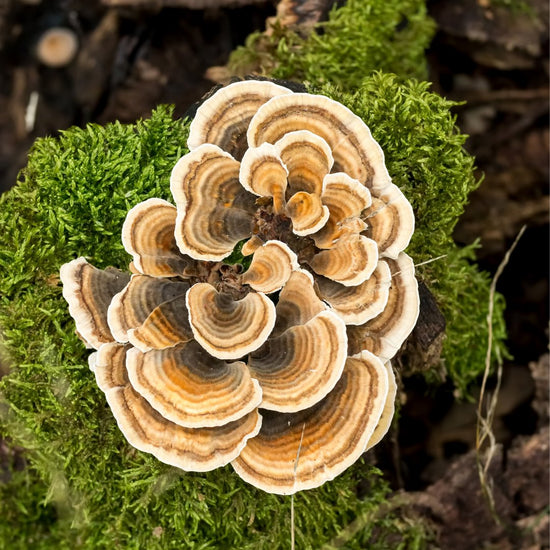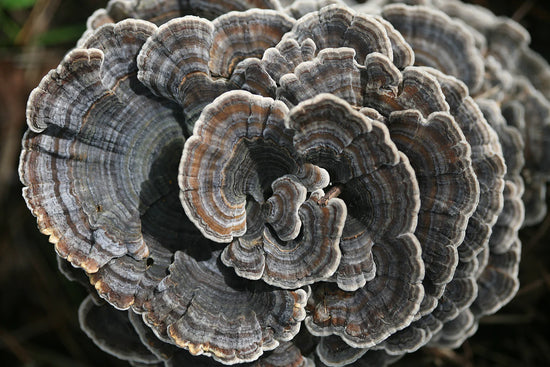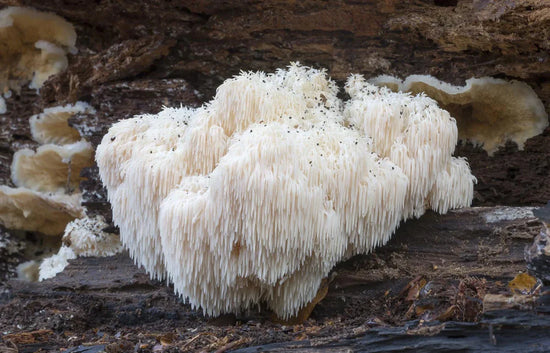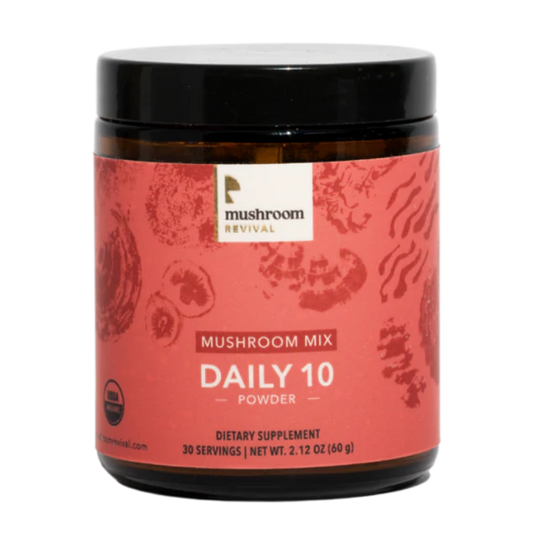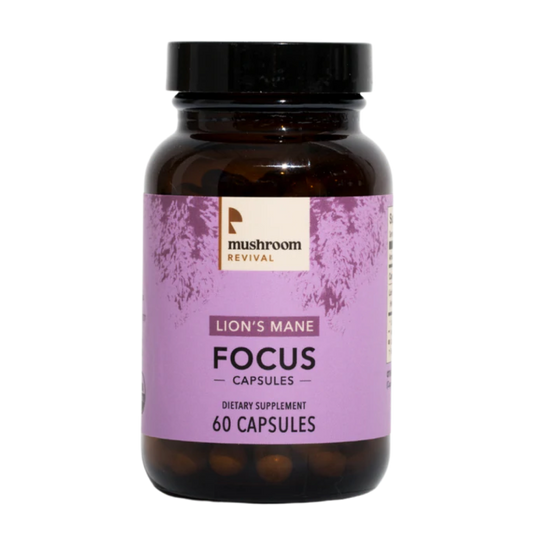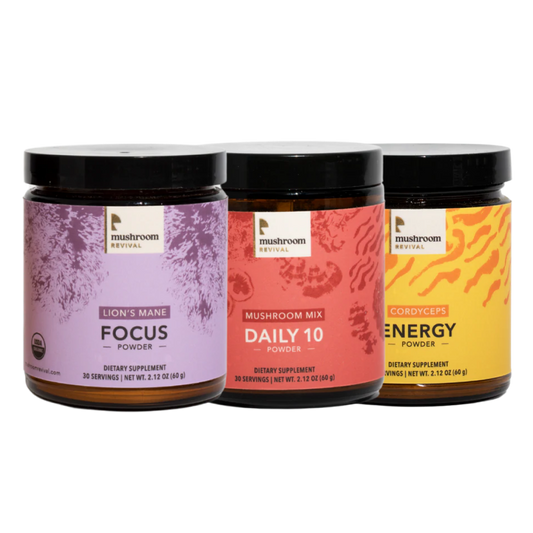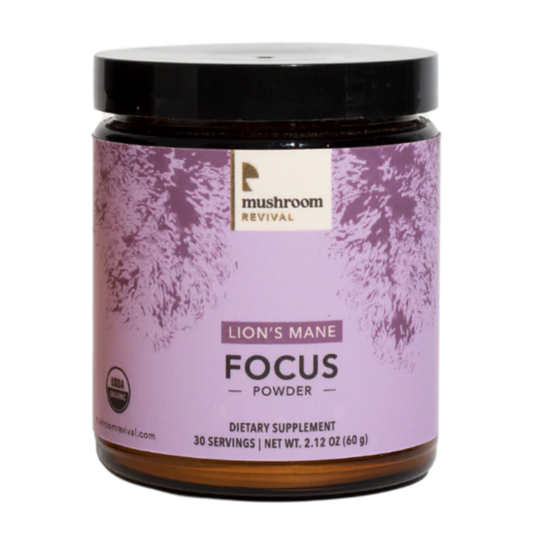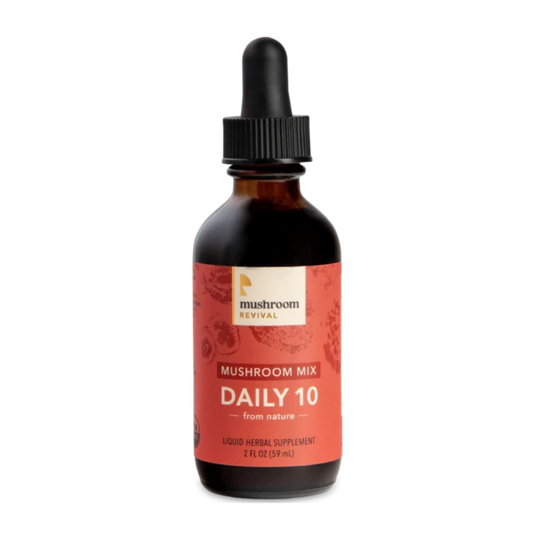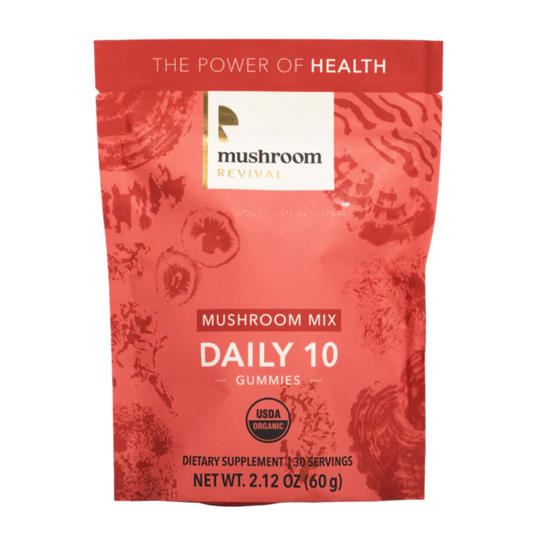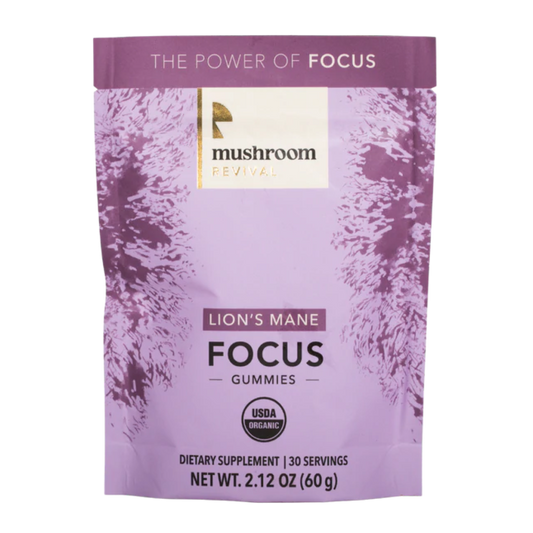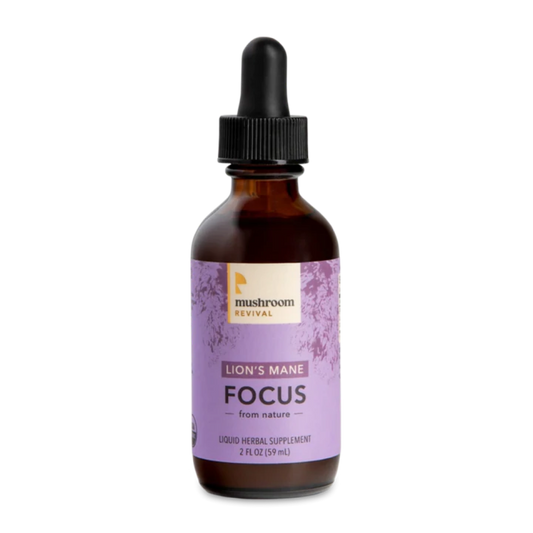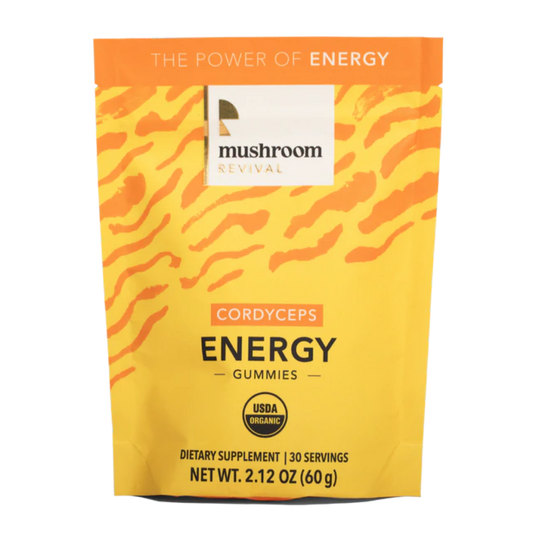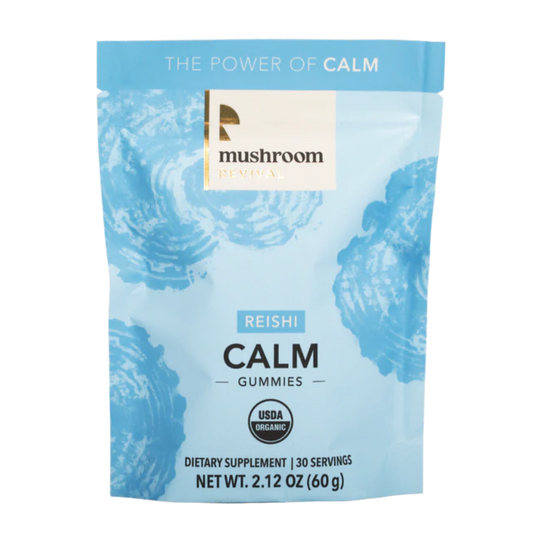TRANSCRIPT
Unknown Speaker 0:00
Alex,
Unknown Speaker 0:11
welcome, welcome. You are listening to the mushroom revival podcast. I'm your host, Alex Dorr, and we are absolutely obsessed with the wonderful, wacky, mysterious world of mushrooms and fungi. We bring on guests and experts from all around the globe to geek out with us and go down this mysterious rabbit hole and try to figure out what the heck is going on with these mushroom friends of ours. And today, we have Cullen joining us from Cape Town, South Africa to talk about his his latest paper about two newly described philosophy species and your newest book coming out. So Colin, how you doing? Man, hey, I'm super good. Man, I'm so excited to be chatting to you. I've been following the podcast for many, many years, since you guys started, actually. So yeah, long, long time coming. Man. I'm super in awe of what you guys have done, and just grateful that you can have me on. Yeah, no, and Thanks for Thanks for coming on and talking about your your research, and this should be a really good conversation. So for people who don't know, maybe haven't read your latest paper and don't know about you and your work, what are you up to?
Unknown Speaker 1:20
Yeah, sure, let me there's so much to tell you, but hopefully people will find that interesting, because I found it incredibly interesting. I do many, many different things. I'd like to think of myself as a multifaceted person that has a lot of interest. So at the moment, what's, what's keeping me busy is, is work. I'm an entrepreneur and an ethno mycologist, so that splits up my time for the most part, and then I have a wonderful dog that also takes the rest of my time. So with work i I'm the chief visionary officer of a company down here in South Africa, very similar to you guys, I suppose in a sense, we were a manufacturer. We manufacture APIs, active pharmaceutical ingredients for beverage and food and cosmetics, and even pharmaceutical like pharmacy based medicines that people can use to help themselves or assist with maladies, just therapeutic medicines made from mushrooms and plants and all sorts of wonderful and for things. Yeah, we've been going for what's it eight years now, and it's been the most amazing experience we we absolutely love what we do as a team. But that's like the business side of things, which I adore. I love what I do. I love my job so much. And then there's the Ethno mycology sort of things, which is research and development on a subject that is very, very limited in South Africa. And I'm hoping that we can dive into that quite a bit, because it's really interesting. I very short, like in layman's terms, I study the indigenous use of fungi in Southern African tribal people.
Unknown Speaker 2:55
And how did you originally get into mushrooms mycology as a whole? So I,
Unknown Speaker 3:02
I actually left school. I didn't go and study. It just wasn't for me. I didn't enjoy it. I don't think I ever will study. I'm hoping to get a degree given to me, and then actually that will be my highest achievement, because then I would have never gone to university and still achieved. So we'll see if that happens. But I just couldn't, I'm too add to to study or do any of that stuff. So I went straight out into the working world. And I worked for Apple when I first left school, and I made my way through the ranks there, and eventually got headhunted by another company. And all in all, at like, age 21 I was doing really well and had a nice paying job, but I absolutely hated my life. It was just not for me. And I was sitting in traffic every single day, and I was getting up when I was dark and going to sleep or getting home when it was dark. You know? It was just not the life that I wanted to live. And I don't know how openly we can speak about psilocybin or any psychedelic use, or anything. Okay, so
Unknown Speaker 4:04
before
Unknown Speaker 4:06
it so it was actually, believe it or not, at age 21 I think it was 21 or 22 I had my first mushroom experience that forever altered my my perception of reality, and yet
Unknown Speaker 4:20
it changed my outlook on what I wanted to do with my life, that I had so much to give and so much to do, that I was going to waste myself not following that. And by no means is corporate bad or terrible. There's amazing corporates that help a lot of people in doing, like, immeasurable amounts of good. So don't get me wrong, corporate isn't bad, but it just wasn't for me. And anyways, I I ended up going to work on the Monday after having my my mushroom trip, and I quit my job there and then, and I was just like, I'm out. I'm leaving. I'm not working my 30 days. This is me. And I packed up my desk and I hit the road.
Unknown Speaker 5:00
And for a couple of months after that, I basically just sat doing not much, just trying to figure my life out, and stumbled upon the wonderful world of natural medicine. And I actually chose to not go into mushrooms. I didn't see their significance. I completely forgot that it was mushrooms that opened me up, and I sort of pushed them to the side, and I was like, no, if we're going to focus as a company on traditional medicine, we're going to do it the the age old way, the way that the Chinese people have done that, and the ancient Ayurvedic people have done and we're going to focus on herbs. And sort of gave up the idea of mushrooms being a part of that. And it was only once I had moved to the Eastern Cape. Are you familiar with South Africa, by chance. Do you know about South Africa, or a little bit I went as a kid, but it's been many, many years since I've been. It's a beautiful place. It's such a magic. It is, yeah, I love my country. I mean, America is also absolutely stunning. I love to come at some point in time. The geography that is just extraordinary, the Appalachian Trail, for some reason, I would love to go outside. Yeah, do it. Do it for good. Immensely beautiful. And
Unknown Speaker 6:08
at the age of about 23 I moved to an area called the Eastern Cape, the the cis guy, which is just beneath the trans guy. Everyone knows the trans guy is Nelson Mandela's both places home. It's very wild. They call it the wild coast. So forests everywhere, wild animals everywhere. It's completely undeveloped. Really beautiful space. And I ended up spending four years in the Eastern Cape every single week, heading into the forest, looking for mushrooms. And, you know, crawling on my belly through trees and thickets, trying to find just interesting things. And it was actually there that I fell in love with him. And I know exactly which one it was. The first one, it was a Ganoderma. It was a Red Reishi Ganoderma astrophy on him that I managed to break off of a tree. And I was hooked. I'm sure you know how it goes, Man, you break off your first mushroom and you just absolutely there was that. It was the Reishi. The Reishi got me and
Unknown Speaker 7:08
yeah, from there I spent so much time in the forest,
Unknown Speaker 7:13
the company carried on growing. We started becoming known as sort of pioneers in this movement. We got into it quite early, so we started to help other companies develop product and bring things to to markets. And yes, it's been the most incredible journey, most wild journey that I've absolutely adored. And in that process, that's when I stumbled onto ethno mycology. It was during that time in the Eastern Cape so since then, I've moved back to to Cape Town just to focus on on business development and on writing and on all sorts of different things. But yeah, spending time in the Eastern Cape was paramount to to my development and, yeah, possibly helping to rewrite a bit of the story of Southern African fungal use.
Unknown Speaker 8:01
And can you tell us about your latest paper? I read it. It's been circulating around the internet quite a bit, which is quite exciting. And,
Unknown Speaker 8:14
yeah, what? What are these two new
Unknown Speaker 8:18
species that have been scientifically described? So just from the outset, the thing to to note is that this particular paper was written by multiple different people, and I was just one of them that got to participate in it. I'm so, so overjoyed that I was asked to to lend my expertise to it. It was headed up by an amazing, young mycologist named Brayton van Lera, a really, really phenomenal guy that did the sequencing. He unfortunately, you know, couldn't get into the field as much as he liked, but because of that, he gets to actually work with all of these specimens in the lab and test them and do all sorts of different things. So it was Brayton, there was Alan Rockefeller that was a part of it as well. His taxonomy work was paramount to actually putting the paper together, really phenomenal. And then a bunch of citizen mycologists like myself. I'm not a an academic, per se. I love academia, I love chemistry, I love all sorts of different things that spark my interest.
Unknown Speaker 9:17
But I wasn't one of the academics that that actually helped to get it across the line that fully is Brayton. So thank you, Brayton. If you are going to be listening to this,
Unknown Speaker 9:30
my involvement was particularly around the Lesotho variety that we found, which is salosi maluti, and the name is really awesome, because we got to pay homage back to the basutu people and the mountain range that it was found on, which was the basutu mountain range. The other specimen that was was documents, is saluspi in jelly. I think it's pronounced both having indigenous South African name.
Unknown Speaker 10:00
Which we're really stoked about. That's that's really awesome. A lot of my work goes back to actually paying homage to to the people. So these two specimens in particular are really unique, because that takes our endemic species from one to three species in South Africa, which isn't much at all, but it's growing. We're getting there. It's starting. It's starting. There are a couple other varieties that do find their homeia that aren't endemic, like seinescence, and we get like varieties of cube essence. The other variety that is endemic is a really strong one called samospi natalensis, which is a very, very strong one from the quesadon, the KwaZulu national region of of South Africa. So three, three philosophy's which we Yeah, I mean this, this is really cool. This is why this. This paper was so cool is because we're starting to tell a story about philosophy and its prevalence here in South Africa. So yeah, the paper outlines many, many different things. It goes into the taxonomy. But I think the thing that's making waves about the paper is particularly the the first account of hallucinogenic mushroom use in a tribal setting, and that's what people are really excited about. Yeah, and for philosophy,
Unknown Speaker 11:19
maluta militaris at maluti.
Unknown Speaker 11:23
I know you found that in Lesotho, and it's used by Basotho lingaka healers. And I'm curious, because
Unknown Speaker 11:35
Basotho people are both in Lesotho and South Africa. But is that mushroom found in both Lesotho and South Africa?
Unknown Speaker 11:46
Is it just endemic to Lesotho? And I'm curious what you know these healers call this mushroom. What are the kind of traditions around it? Stories, usage.
Unknown Speaker 11:58
So maybe just to lay the groundwork here is to explain
Unknown Speaker 12:04
just the geography of the of the area. So Lesotho is a landlocked nation. It's really beautiful high mountainous region that's bordered by the jockeysburg to the south east, more or less, and then to the north is the free state. There's a bunch of mountains there. But this nation is, yeah, is an incredible nation. Really beautiful landscape, high humidity. It's perfect for altitude, loving fungi. It's really great. But the idea of the Basotho people, and the mushroom in particular, not being localized just to Lesotho is quite interesting, because our nation has various different indigenous people from all sorts of different tribes we have. What's it? I don't want to lie to I think it's 12 different national languages that we speak here,
Unknown Speaker 13:03
the people are
Unknown Speaker 13:05
are very culturally similar, but also so diverse in the same light as well. So there's busses of people living all over. Mass migration does happen quite a bit from
Unknown Speaker 13:18
from rural areas through cities. So you see all sorts of different people interacting with each other. The mushroom in particular, is actually found in the sutur case. It in towards the Free State area as well. At this moment in time, we might find it somewhere else but its closest relative, which I've written down. I'm going to have to read it to you, just because it's a species from China. It's celospi Two, two CO and Genesis. I think it's pronounced, and it's a really interesting one, because it's, it's the closest relative. And just like celospi, maluti, is also found in a mountainous region as well, really high elevation, about 2000 meters up. So I think these species do have to be in higher elevation areas, so we probably won't find them anywhere outside of that,
Unknown Speaker 14:09
that immediate area. But maybe time will tell, we'll see. Hopefully we'll find some other closely related specimens.
Unknown Speaker 14:17
And so what are the traditions around using this mushroom by the Basotho healers, and kind of, what is, what is its history? How long has it been used? And kind of, what is the traditional backstory around this mushroom? Love this. I mean, it's very, very cool. So
Unknown Speaker 14:38
I,
Unknown Speaker 14:40
I didn't just stumble upon the the traditional use of of this fungi. I was actually hunting for it, and that's particularly around my my work as an ethnomicologist. So I I've been traveling for the last five years all around South Africa,
Unknown Speaker 14:57
hundreds, 1000s of kilometers into the most obscure.
Unknown Speaker 15:00
Places, speaking to hundreds and hundreds of different in youngers and sangomas, our equivalents of like a diviner of a shaman, essentially an enyanga would be a like a herbalist.
Unknown Speaker 15:13
Yeah, there's various different names for them, but speaking to to all of these people documenting the traditional use of fungi, and that's from therapeutic to gourmet to cosmetic use. And then also I was trying to find in particular entheogenic use as well. So the whole purpose of it was actually to try and retell a bit of a story, because unfortunately, current the current academic standpoint in South Africa is that our people were not mushroom loving people. They didn't use mushrooms, and they never have and they never will. And I set out on this project because living in the Eastern Cape, I saw firsthand accounts of people using various different mushrooms, so I knew that the story wasn't told in its entirety. So yeah, for the last five years, I've been traveling, and Lesotho was just one of the areas that I traveled to. I was actually looking for for something in particular, which I'll touch on in a second. And it just so happens that on me 31st of December in 2021 I was hiking with a bunch of friends. We had done about an 80 kilometer hike. I don't know what that is in
Unknown Speaker 16:23
in the converted metric, but yeah, 80 kilometers through the mountains, and we had basically stopped off for New Year's
Unknown Speaker 16:35
Eve. My friends had wanted to get some some beer from the local shipping, which is like the tavern, and we're just going to celebrate. And I decided I was going to walk off into the the the field, the nearby field, and I went out into the field. And I knew immediately, as soon as I saw them, that this was something special, because I'm sure that you've seen their morphology is really unique. They're really cool looking little mushrooms. They're super weird. Yeah, super weird. And I got down on my belly, and I was sniffing these things, and I was looking at them. I was like, gosh, if this is another philosophy, I'm going to be so, so happy. And yeah, I, I am part of the Mycological Society of southern Africa here. So send some photographs immediately. So if anyone had
Unknown Speaker 17:20
been aware of this mushroom, long story short,
Unknown Speaker 17:24
the the moment I saw it, I realized it was something unique, and I needed to document it. So that's when the actual work started. And my guide at the time, his name was Aviva, and Aviva put me in contact with Betsy. Was a, or is still a traditional healer. She stays in KZN, and she was the one that that translated for me. She was my, sort of, my guide in in that area. Unfortunately, I don't speak any of the indigenous languages, which is a shame. I wish that I did at some point in time, fingers crossed, I'll go and learn, but Betsy joined me, and was actually for the best, because
Unknown Speaker 18:05
there was a lot of nuance that I couldn't pick up on, just culturally, that she helped me, and her and I worked together to document the indigenous use of this mushroom in particular. And the cool part is that this mushroom is used
Unknown Speaker 18:21
and has been used for
Unknown Speaker 18:23
several generations, it seems, as a psychedelic medicine to access altered states of consciousness. And then also the one that we didn't, unfortunately, get to talk about in the paper. There was a bunch of stuff that we left out of the paper, but there's also a lot of therapeutic use of this fungi, used for for all sorts of different ailments that these linale are using, they're prescribing it. But in particular, the one that that fascinated us and that we wanted to focus on was the the entheogenic use of this mushroom. So the name, which,
Unknown Speaker 18:59
in my my research, I always try and get, like, a couple of different things. I try and get the the uses. I try and get some recipes, because recipes are always great. And then also an indigenous name, so we can pay, pay respects to to the name that they call it. So the name is keohala kwaba, and it has a quite an interesting translation. It means the crow cigarettes, or the cigarettes and the crow and it this is particularly because the basuto people believe that or they they've accounted it's anecdotal accounts, so we can't, like, verify just yet, but the idea is that they often see them landing in the fields, and the birds pick them, and they hang out of their mouths like a little cigarette.
Unknown Speaker 19:37
It's funny. That's awesome. Where the name comes from. So,
Unknown Speaker 19:42
yeah, on travels we I managed to speak to a number of different, different healers, mainly diviners, the sutes, the linole, they call them, and document some of these uses.
Unknown Speaker 19:55
This mushroom is widespread in the area, and it's revered and.
Unknown Speaker 20:00
But what we're trying to show is that it's used in a particular fashion, which is a beverage. But this beverage is multifaceted in the in the form that it's used to, not only like cure people, it's also too divine. It's to to try and find the cause of a melody. So if you don't mind me just going on a bit of a tangent.
Unknown Speaker 20:25
So in South Africa, how, how our traditional medicine system works, is that you have a a sangoma, a diviner, a soothsayer, a shaman, and then you have an Inyanga, which is a herbalist, a medicine practitioner that has an understanding of of botanicals.
Unknown Speaker 20:48
Usually, when you have an affliction that you're aware of and you you know what's causing it, then you just go straight to the younger and he will prescribe you medicine. He will grind it up for you. He'll grate it, he'll make a medicine for you. However, there's a lot of cases, or a lot of times, when your issue is not caused by anything physical. There's a belief that it's caused by someone Hexing you, perhaps magic related dark magic, or perhaps your ancestors. There's a big affinity for ancestral belief here, that perhaps your ancestors aren't in favor of you, perhaps you did something wrong to upset them, and you need to try and find out what's causing this issue. And then you'll go to a sangoma, and that's what sangoma will divine. They will find out what's causing you this affliction. They will then do the appropriate remedies to this, and then, as the final step in the process, they will give you a medicine to help take care of the actual physical ailment that's troubling you. So in Lesotho, it's no different, because all of the people were connected at some point in time, and just offshoot, some people came into South Africa, left South Africa and then came back. The whole history of South Africa is a really interesting one. The original indigenous people being the San the Bushmen, but there was a lot of intermingling of tribes and stuff. So the sutu would be no different. How it works is that a beverage, a brew, is manufactured, and it's usually made on its own with slope maluti. And this Brewer is called and saponi is the word for mirror, and that's quite an interesting one. We're going to pin that for a second because it's a very interesting concept, the fact that a mirror is so prevalent in this
Unknown Speaker 22:38
so this brewing, this this beverage is made either on its own or it's combined with other psychedelic substances, like buophonie being the bushman's Poison bulb. I don't know if you're familiar with that one very strong psychedelic poison if it's not administered correctly. So yeah, this brew is made, this beverage is made, and then it's drunk as a
Unknown Speaker 23:05
as a drink as a remedy. The there's two ways to administer it. It's either administered by the the shaman, if you want to call it that, the sangoma, the lenole, they've got many different names, but he will drink it, and then he will divine, and he will figure out what your issue is, or you will drink it as the recipients, as the as the patients. And then you will explain what, what's happening to you. And then he will divine, or interpret your your visions, usually, though, what what happens is you're placed in front of a mirror while this is going on. And I don't know if you've ever been
Unknown Speaker 23:44
been in a psychedelic state and had a look at yourself in a mirror. It's quite a quite a weird experience. Yeah, I was laughing because that's usually the last thing you want to do. And then people are like, don't look at
Unknown Speaker 23:58
a mirror. No. Anyone listening. I mean, do it. It's very interesting. It's very fun, but it's quite scary.
Unknown Speaker 24:05
So the patients or the or the traditional healer will then look into a mirror and divine. And the whole point is to try and figure out, why are you struggling with the thing that you're struggling with. Now, it's an interesting one, because when you take psychedelic mushrooms.
Unknown Speaker 24:23
I mean, my journey started because of them. I have such reverence for them. I I know the effect that they have, the powerful effect they have for for accessing these altered states of consciousness. And what fascinates me is that the Lesotho people have been doing this, know exactly how to administer it, know exactly how to extract it, and they've been applying this in a very similar fashion to how people apply today. I mean, beverages aren't the number one form of consumption, but they do. They are some people that do try them. So, yeah.
Unknown Speaker 25:00
It's wonderful to see that this lineage of traditional use has been passed down and continue to continues to be used today in that fashion. So my point of writing about it is to try and document so that we don't lose this to the annals of time.
Unknown Speaker 25:18
So I'm I'm really curious as an ethno mycology
Unknown Speaker 25:25
in South Africa.
Unknown Speaker 25:27
Who, in South Africa has a very interesting
Unknown Speaker 25:32
history of colonization that really apartheid was not ended that long ago. And, you know, I went as a kid, but it there's still a really strong division in terms of neighborhoods and
Unknown Speaker 25:48
in terms of class and wealth. And although, you know, the same thing happened in the United States, like segregation was ended, quote, unquote, but there's still, I mean, we're still seeing the effects of racism and colonization,
Unknown Speaker 26:05
and those just don't go away the second you change the law, you know.
Unknown Speaker 26:10
So I'm curious, like, your experience, like, as a white guy, you know, like,
Unknown Speaker 26:17
yeah, like, is there a bunch of pushback? Are they just like, Dude, get the fuck away, you know. Like, don't Yeah. Like, I'm not telling you shit, you know, like, what, what? Yeah, what has been your experience and what's kind of the dynamic
Unknown Speaker 26:31
of you researching this is, is there? Yeah, I'm just curious. It's a wonderful question. It's such, such a good one, because you would think that that would be the prevailing thought is that this is a reserve knowledge that wouldn't be
Unknown Speaker 26:49
freely given. But
Unknown Speaker 26:54
I think when approached with the right mentality and right reverence,
Unknown Speaker 27:00
it it can allow for for easy transfer of knowledge, and that's what we're trying to do. So one thing that is beneficial to my case, it's not beneficial to the to the overarching case of traditional medicine in South Africa, is the fact that more young people are choosing to move out of village life. So they're moving away from the rural village to the cities, and in doing this, they are choosing not to partake in the cultures of their ancestors.
Unknown Speaker 27:33
And because of that, a lot of fear is felt by these traditional healers. Everyone I speak to, for the most part, are over 40 to 50 years of age,
Unknown Speaker 27:44
and they are fearful that when they pass on, that this knowledge will pass on with them. So an interesting part is that not everyone in South Africa, not every traditional healer in South Africa, has an affinity for fungi. So I can head to a village, and it's really nice because they make it easy for me, they display who the traditional healers are with flags. So various different flags mean different things. So you go into a village and you walk and you'll see flags on the posts of a of a house, and you know, okay, this person does this medicine, this person does this medicine. And
Unknown Speaker 28:18
then sometimes there's animal skulls, sometimes this whatever on the gates. And I, out of the 10 people that do traditional botanical medicine, there will be one that has some knowledge of fungi. And they don't display this. They don't talk about this. I have to sort of pry it out and explain to them, like, have you ever seen this before? And they're like, no ways. You know about this. You know about Amanita muscaria.
Unknown Speaker 28:46
They call it NGO and go away, boom Vu. And it's like, no ways, okay. You know about Ammonites, no mascara. This is cool. Tell me what you know like, Would you be open to sharing? And because there's this interest from from a white person, to learn about their culture, there is,
Unknown Speaker 29:03
there is some,
Unknown Speaker 29:06
you know, acknowledgement that that I'm not trying to just take and and run i i actually do love what I do, and I'm trying To do this for the best possible reason.
Unknown Speaker 29:20
So,
Unknown Speaker 29:22
yeah, the On the contrary, though, every now and again, I do interact with people that are very standoffish. I went to the biggest traditional medicine market in South Africa in KZN, and when I got there, there were a lot of eyes on me. I was the only white person there, and there were a lot of eyes on me. And I
Unknown Speaker 29:41
would walk past people, and some of them would spit on the ground in front of me. And that's by no means, I think, a tale tell sign of like the actual belief system of those particular people. I think that they just are fearful that
Unknown Speaker 29:56
there won't be
Unknown Speaker 29:59
reciprocity.
Unknown Speaker 30:00
See once knowledge is shared that and I understand that I do. But for every person that spits on the ground, there's six or seven or eight that welcome me with open arms, and they're like, come into my like tent. Come and learn. Come. Come and let me show you off the time they want to show me the weirdest things, like things that I don't really want to see, like animals and carcasses and stuff. But I'm so open that they're willing to share about it. You know,
Unknown Speaker 30:28
South Africa is an interesting place. South Africa has this massive history, and I don't want to to,
Unknown Speaker 30:36
you know,
Unknown Speaker 30:39
make it any less than what it was. How old are you? Alex, you 29 you're 20 still young,
Unknown Speaker 30:47
30 this world compared to some people, 39 Yeah. Okay, so I turned 30 this year. So I'm what's known as a born free. I was born as a party ended. So I never got to live in it. I have family members that got to live in it. And the way that I've been brought up is that I like, I It's It's of no concern to me. Human beings, whether you're kind, is what matters to me. And for the most part, a lot of young people believe the same thing. It's like, we're all here. We're brothers and sisters. It doesn't really matter, like our skin color. We want to try and be as kind and as generous as possible. And for the most part, that is what's happening. So you have interactions with all sorts of different wonderful, weird, wacky people, and it's just the coolest thing possible. I mean, that's that's how you rebuild a nation, is, is with compassion and generosity, so I think that is happening, but I don't want to take away the fact that we did have this tumultuous history. So I'm also speaking from a place of privilege. So I also completely understand that maybe my viewpoint is also a bit warped as well, but everyone that I interact with when I go to the villages so opening and so welcoming and they're willing to share their knowledge. And because of that, I've got to, I've been able to document the most incredible, incredible accounts of traditional mushroom use that is currently unknown of in southern Africa. It's really I get to live a really wonderful life.
Unknown Speaker 32:18
I don't know if you caught this, and this is like a little add aside, but in your paper you're talking about, you know, you know, we would collect the mushrooms, we would prepare them, blah, blah, and then sometimes, if we needed to, we would it. Would use a dye on them called Congo red. And I was like, I watched a whole document, a whole documentary on dyes and pigments, and a lot of them have really fucked up histories.
Unknown Speaker 32:47
The dye and pig pigment world is really unique,
Unknown Speaker 32:51
from using mummies as dyes, and like all these crazy these crazy things, Congo red, I like, quickly Googled it, and it was like from this German researcher who made this new red color. And it was the same year as the Berlin Conference, which basically decided the scramble of Africa and the like mass colonization of Africa. And it was the same year so, and it was like, he was like, oh, let's call it Congo red is like, almost like, I don't know it's kind of like, and it's interesting that it comes into play. I mean, it's a
Unknown Speaker 33:30
widely used dye. There's also, I think, Congo blue, which is used in a lot of different industries. But I just thought that was, like, a very interesting aside that I, I think dies are fascinating. It's really interesting to seeing what people are doing with dyes at the moment and the history that that comes in with them. I love I love storytelling. I love history. And there's so much history to be told in all of these areas, Africa is a treasure trove of knowledge waiting to be discovered.
Unknown Speaker 34:00
So I'm curious. So I was just, and I'll keep my friends details anonymous. But I was talking to my friend, and they just moved to Africa. I'll keep the country anonymous as well. But
Unknown Speaker 34:16
they were like, Yeah, I might want to grow some philosophy. And I was like, just Googling the country and like the laws in the country, and I couldn't find anything on any laws around philosophy. And I even pulled up, like the country's official law document on drugs and scandid use, like finder, and nothing on mushrooms. And then I was doing more research on other countries around and and I couldn't find anything.
Unknown Speaker 34:44
And I was like, Yeah, and it's really interesting. Like, you know, you're kind of describing in the beginning, like there's not much information around entheogenic use of mushrooms in Africa. And, like, even.
Unknown Speaker 35:00
The work from like Gaston Guzman, where he described many species of philosophy around
Unknown Speaker 35:06
many different countries in Africa. And was talking about, like, you know, the tesselli cave paintings and things like that, like, and even listening to, you know, Kalindi is kind of like an OG he used to take, like, 30 grams of mushrooms. And he used to give these talks that were really amazing about entheogenic use of mushrooms in Africa, and
Unknown Speaker 35:29
but most of that information is like, it's almost, I don't know the right word. It's like,
Unknown Speaker 35:36
you know, you see hieroglyphics in Egypt, and they look like mushrooms, and so you, you postulate a theory of, like, oh, well, they, they must have done it, you know. And it's not like concrete evidence, if that makes sense, it's, it's like, you're, you're making a story of, of, or even, like,
Unknown Speaker 35:57
you know, stone date theory out of Ethiopia, or whatever it's like, it's a nice story, and it's probably maybe parts of it are true for sure. Or, like the Tesla cave paintings is like, those are definitely mushrooms. So they're definitely must be mushroom activity or, like, but, you know, it's, they're mostly stories that sound correct. But I'm just curious, like,
Unknown Speaker 36:22
your opinion on that? Do you think that there's a lot more information that is,
Unknown Speaker 36:30
you know, like, like, this philosophy lutai, it's, like, it's, it's known by the Basotho people, but just not well known beyond that, you know, and there's just a lot of use and and information is just not shared beyond that village or that that group.
Unknown Speaker 36:54
Or do you think that in you know, you're like, you're saying, like, one out of 10 people you're talk to actually use mushrooms. Do you think it actually is like as a continent? You know, mushrooms are just not as used as much as other continents, which is also true, like some countries just don't,
Unknown Speaker 37:12
or some regions of the world just don't use as many mushrooms as other regions. So I'm just curious, like, your your stance on that? Yeah, sure. So I think you know, when this is always the issue as a as a researcher, is, if you have a predisposition to wanting something to sort of state your case, it can be really dangerous. And we can start to see mushrooms everywhere. So, you know, speculative, uh, understanding is, is such an interesting one. It's like,
Unknown Speaker 37:45
like, when someone will bring up to me and about a traditional medicine, and they they combine it with something else, and they're like, they'll speak about it having a stalk and, like, a flat cap on the top. And I'm like, that sounds like a mushroom. What do you call it? But it's like, maybe it's not a mushroom, maybe let me hear what race to say. So it's also about like not putting your own,
Unknown Speaker 38:07
your own once, onto it as well, in in saying that
Unknown Speaker 38:13
it's really interesting, because up until now, it has just been that it's been speculative. It's been hypothesized that perhaps African people have a rich history of mushroom use.
Unknown Speaker 38:29
But what this paper highlights for the first time is a hard, concrete use case of psychedelic mushroom use in southern Africa, and in that case, Africa as a whole. So it's our first documented account of of mushrooms being used by tribal people to to access altered theater consciousness, consciousness, which is really exciting, but I
Unknown Speaker 38:52
want to just pull back for a second. You asked me about the about the legalities and stuff. It's so right? I kind of went on a tangent. Sorry,
Unknown Speaker 39:02
I've
Unknown Speaker 39:05
got it locked away, don't worry. I mean,
Unknown Speaker 39:08
so with with the law at the moment, since South Africa, it is still schedule seven. So we schedule ours opposite to the way that you guys do it. So schedule seven for us would still be on par with heroin and cocaine and some of these odd substances.
Unknown Speaker 39:24
And
Unknown Speaker 39:26
it's really terrible, because South Africa up until quite recently, and I think we still do, we just follow suit with many, many other places. So we saw that America had their criminalization of psychedelic substances. Were like, we should probably do that as well, and because we were very much associated with nations all around the world, and we used them, and we didn't want embargoes, and we wanted all of these different things, we just followed suit with laws. So we put laws in place that remain to this day, that are hugely detrimental. But the one thing that is quite exciting is that we.
Unknown Speaker 40:00
Have a lot of protection on indigenous knowledge, so we have clauses in our laws that allow for traditional use cases. So our category D medicines here in South Africa being like medicinal mushrooms or plants,
Unknown Speaker 40:17
they are exempt from certain
Unknown Speaker 40:21
legalities and they don't need as much pharmaceutical research in order to manufacture or produce them. The reason being is that a huge amount of economy thrives on on the informal sector. So our informal sector, if it were to go up in flames and people couldn't go to one of the 1000s of different healers all around the country, it would really make a detrimental mark on on the country,
Unknown Speaker 40:54
primarily because a lot of our country, I think it's something crazy, like 70% of our country, might even be higher than that live in poverty, so they don't have as much funding to go to to proper medical practices or Western medical practices. So they go to the traditional healer, and they have and they will continue. Some people still choose to go to the traditional healer. So if you stop doing that, and you put laws in place that don't allow for that, it could really be a detriment to to the the ancient way of doing medicine here in South Africa. Obviously, you know, regulations are always helpful in making things better, but it's a fine line that you have to toe. So we do have
Unknown Speaker 41:37
nice exemptions and wonderful laws in place that do protect against that. So we're hoping quite soon that things will change. So just to lay a bit of the groundwork, I can't talk too much on it at the moment, just because it's quite an emerging thing. But one of my really good friends, Sebastian foster he is one of the heads currently on the legal case for decriminalization of psilocybin containing mushrooms in South Africa. He's a really phenomenal individual that's written a number of papers. So when you sort of Google psychedelic mushrooms, illegal or legal in South Africa, his papers will come up. All
Unknown Speaker 42:16
in all. What's happening at the moment, there seems to be some really good traction,
Unknown Speaker 42:21
primarily also because of this paper to showcase that this now has and always has been a traditional medicine. Perhaps we can find some exemption for this. Maybe it can be categorized differently. We'll see in time. Time will tell. But it is exciting that things are starting to make some waves. So I'm very grateful that, you know, my paper gets to be part of this, and that I will be called on to to assist with us. So yeah, we'll see. Hopefully the next couple of years will be an exciting one for psilocybin mushrooms and South Africa,
Unknown Speaker 42:54
yeah. And just, just an aside, I was doing, you know, very quick research before this, and I found
Unknown Speaker 43:03
I haven't read the book, and noted the book is in French, but
Unknown Speaker 43:08
it's it was published in 1992 by this French researcher,
Unknown Speaker 43:14
and the translation of the book is something like solely main the healer or the Power of plants. And in the book, talks about how he traveled to Ivory Coast and took some mushrooms with some traditional healers.
Unknown Speaker 43:30
If you haven't heard of it, maybe something to look into. I haven't read it, but I just kind of I found, like an excerpt from it, or like a summary. And it seems like another pretty interesting account
Unknown Speaker 43:47
that, yeah, could be an interesting read.
Unknown Speaker 43:52
Yeah, and I'm sure there's a million other things out there. They're just like, it's sometimes really hard to find.
Unknown Speaker 44:00
Yeah, well, that's an amazing segue into this next portion, which I've still got your your last question in my mind, if you would allow me, yeah,
Unknown Speaker 44:09
of just running into the next one. So you asked about the, you know, the wider use of these mushrooms, and are they used? Like, what is the story to be told you. So that does bring me on to the second part, which is that I've been traveling like I explained expressed earlier, to document the current traditional use of these fungi. And I've been fairly successful. There's still a lot to discover there. But in this time frame that I was doing this, I would encounter so many people that would continuously tell me that they learned from their forefathers before them and their forefathers before them. And I kept thinking to myself, like, how far back does this go? Like, where does this knowledge originate from? Because we have amazing, amazing accounts.
Unknown Speaker 45:00
Of all sorts of different mushroom use, which, like, for instance, Ganoderma. We spoke about Ganoderma earlier. We have a number of different varieties here in South Africa. But it surprises people to learn that
Unknown Speaker 45:14
one of the most sacred ceremonies for young boy is his initiation ceremony in the Eastern Cape,
Unknown Speaker 45:20
and in order to become a man, he has to go through his initiation ceremony. And that involves Reishi Ganoderma, Astro Africana, mushrooms, where they grind them down and they paint them onto the boy's body after circumcision. And he can't become a man until that happens. And that like no one knows about that, like no one's documented that. Or for another fact that, like different puffball mushrooms are used for for burn victims or for cuts and abrasions, or different blight fungi are used as hunting poisons applied to arrowheads. Or there's, there's so many man like I have so many accounts the
Unknown Speaker 45:59
the Zulu people use
Unknown Speaker 46:03
amit mascaria, very similar to the to the way that the ancient Vikings use them as well. They were the Zulu people are warrior people of South Africa. They were the ones that fought to get the British and all in all, in finding all of this stuff, I came to the conclusion that this knowledge has to go back further than our current like 20th century understanding. So
Unknown Speaker 46:29
I realized that our wonderful people as as wise and as knowledgeable as they were, they didn't, unfortunately, keep records. They didn't keep written records of of their use of these different fungi. So I went to the next best place. I went to our rock art archives in South Africa. We have amazing artworks, some phenomenal rock arts archives. And
Unknown Speaker 46:53
I started sifting through some rock arts archives. And I sifted through over 200,000 images. And I wanted to try and find out, could I prove that ancient hunter gatherers here in South Africa used mushrooms way back when? Like, can we find some proof to rival What's it Cecily and maybe even the What's it the Mesoamericans or the South American people? Can we, can we showcase that South Africa as the cradle of humankind could potentially be as well a cradle of spirituality. Can we show this in some form? And I think I found proof. I found over 300 depictions of mushrooms. Potential mushrooms shouldn't be biased, but potential mushrooms in our rock art archives. And what this points to is that these mushrooms are so widespread and so used, we just have not documented it yet. It's
Unknown Speaker 47:53
it just has not been done. I suspect the same for Africa, that people just haven't taken the time to look so, yeah, it's an exciting time. At the moment, I'd love to tell you more about the rock arts. I don't know if you want to see some photographs or you want to unpack some of that. I don't know your time frames like, yeah, yeah, yeah. We got a
Unknown Speaker 48:14
34 minutes until you got to definitely leave. So yeah, let's run into it, man, let me take a look here quickly. Let me see how I can do this.
Unknown Speaker 48:29
And a quick aside. I told this story before, but,
Unknown Speaker 48:35
you know,
Unknown Speaker 48:36
yeah, I mean, it's a very complex topic, but in 2015
Unknown Speaker 48:42
I was on a
Unknown Speaker 48:44
a field study trip in Ecuador, and we were spending a few weeks in Yasuni National Park. And one of the indigenous groups in Yasuni is the wahrani people, which is actually the latest contacted tribe in Ecuador.
Unknown Speaker 49:02
And there, it's a very small group. It's like around 2000 people. And
Unknown Speaker 49:10
unfortunately, like with colonization of oil, the oil trade, and
Unknown Speaker 49:17
that's how they were contacted, and their way of life has been
Unknown Speaker 49:22
extremely disrupted. But similar story of what you're telling me in South Africa, of like, the younger generations wanting to move to the cities and not take up, you know, the stories or the the
Unknown Speaker 49:35
traditions and things like that. Same thing, it was like we were on a walk with an elder who, you know, like, most of our group was white, but, you know, like, we're all these, like, starry eyed kids being like, Oh, this is so cool. Like, you can use that plant for, like, this medicine, and you can weave a basket with that. And we're like, fucking stoked. And we're like, this is the coolest thing.
Unknown Speaker 50:00
Ever, and he was stoked that we were stoked. And like, you know, like, there's obviously, like a translation gap, but he could see us being super excited. And then, like, one person in our group was like, hey, so like, Are your kids super excited about this? And he was just like, he got super sad all of a sudden. And like, he was like, no, none of my kids want to learn anything about this. And all of my kids, all my grandkids, they want to move to the city, and they want, like, a job and to buy sports jerseys, and they want Wi Fi. And he's like, yeah, and he was getting pretty old, and he was like, yeah, all this information that has been passed on for, I don't know, 2050, generations is gonna die with me. And it was like, fuck like that. And it seems like it's like a common phenomena of like, and,
Unknown Speaker 50:56
yeah, the unfortunate result of colonization and like, the the
Unknown Speaker 51:01
cultural influence of of
Unknown Speaker 51:05
on on young kids who, like, see
Unknown Speaker 51:08
this new industrial way of life as, like, cool. And then, yeah, and then, like us were like, oh, like, you know, like, plants mushroom, like, this is cool, you know? And it's just like this funny loop. I mean, it's, it's sad and funny. It's like, funny in a really fucked up, dark way. But,
Unknown Speaker 51:29
yeah, it's,
Unknown Speaker 51:31
yeah, so I just wanted it a little aside, but it's, it's such a such a true account, because, like us, and a lot of young people like me, we we have become enamored with with nature. Once again, it's like, please, I want to go. Can I learn from you? I'll sleep on the floor like I'll do anything what like. Let me just learn from you. And then other people that have been brought up with it, they just would much rather and write, rightfully so. They want to create a life for themselves. And they don't see a life in that culture anymore, because they've been blinded or perhaps influenced by by Western culture. And, you know, why would we? Why would we not want people to achieve their highest good if they truly believe that that's their highest good? Then then great. And I wish people all the best. Sometimes, though, it is nice to see when a child sticks around. So I had one time when I was in in Hogsback in South Africa, and I was walking through the village, and I managed to speak to one of the healers, and he allowed me into his house, and I got to sit with him and his family, and he explained to me, and he took me through a whole journey, and I I got to learn from him. And all the while his son not, not a young boy, maybe 2423
Unknown Speaker 52:44
sitting on the floor listening to his father talk. And I the father eventually went off, and I asked the son, like, What, What's he doing? And he said, learning. And I was like, learning what he's like learning from my father. I'm going to take over from my father. And it's that really filled me with so much joy that there are still young people, there are still people that do see this as a viable alternative, that they can go down so, yeah, I'm hopeful, man. I'm a really optimistic person. I as we become friends, we're going to become best friends, like as we become friends, you're going to see I try and remain as as good and optimistic as possible. Yeah, maybe, well, going back to South Africa is definitely on on my bucket list. So I don't know when, but I will. I will be there. I'll visit you, for sure. But amazing, yeah, tell me. Tell me about this. K Bart, okay, let me show you quickly screen.
Unknown Speaker 53:37
Let's see here. Can you see my screen?
Unknown Speaker 53:45
Can you yep, yep, it's mushroom Muti the people won't, but I'll, we'll try to narrate. And yeah, it's okay. I'm just gonna go forward, because a lot of this stuff isn't important to
Unknown Speaker 54:00
to this next story while it's busy loading, and tell you another story, which I found so fascinating. I was telling Hamilton and Morris about it a little while ago,
Unknown Speaker 54:08
and he found it quite interesting as well, just the fact that there's one really interesting account that I managed to find of of traditional fungal use, micro fungi actually that, or that that really took me by surprise. So there's a, there's a fruit in South Africa called dungueia. It's the Wild Plum from the harpy filament tree, if I'm not mistaken. And this is such a cool story, because I would, I would walk past this tree all the time, and it would drop its fruit, and I would always pick these fruits up and give them a nibble and eat them. They don't have much flesh to them, but they have an amazing, really taut rind, and I'll eat them. And I was walking, and I learned from these healers that they just walk past this fruit, they don't pick it up, they don't do anything with it. And I was quite fascinated with this. And it turns.
Unknown Speaker 55:00
Out that they go back a number of months later, or number of weeks later, sorry, and they go and look at these, these fruits laying on the ground. And they will only pick them up once they have this white fur. They call it like a white fur that grows on it. And they'll take these fruits back to the village. And what they'll do is they'll take a knife and they'll shave off the white fur off of this fruit, and they'll use that and they'll apply it and pack it into a wound and put on a cut or an abrasion. And this fascinates me so so much, because potentially, could this be an antibiotic sort of alternative? Could it be an antifungal, antibacterial alternative? Perhaps we need to test this fungus and figure out if it's a penicillin strain. But what it shows me is that these traditional healers have been using all sorts of different acro fungi and micro fungi for for remedying ailments or maladies that they're struggling with. So yeah, I found that quite interesting. I think the presentation should be loaded. Yeah, let me show you quickly. So you know, I'm just gonna close my door, give me one second.
Unknown Speaker 56:13
So it's winter in Cape Town, so it's super cold, only my door opens it up. Okay, I'm back.
Unknown Speaker 56:18
So I so I am,
Unknown Speaker 56:22
I have 10 minutes. I just someone's coming over. I gotta
Unknown Speaker 56:29
so all of this culminates in me trying to look for some rock art. And
Unknown Speaker 56:34
I started out my journey by looking like, could I find if I'm gonna find unbiased proof of potential fungal iconography in our archive, I'm going to need a lot to showcase. If you're familiar with academia, you need to substantiate your viewpoints really, really well. So I started out to try, and I tried to find some representation of people, maybe holding mushrooms. And everything I'm going to show you now is first time, sort of account of people seeing this. Not many people have seen this. So
Unknown Speaker 57:06
started to try and see, could I find some just general rock arts of people holding something similar in an appearance to a mushroom, maybe with a Stipe and a bulbous cap or flattened cap? Could I try and find just the general, you know, look and feel of a mushroom? And I started to find some depictions, not many, but some depictions of these things with these slender stripes and these bulbous round tops, people holding them, slender stripes and bulbous round tops people holding them. And I was like, This is so cool. Maybe there is something to my hypothesis here that people have been using mushrooms for millennia in southern Africa. So I continued my search, and I knew, Okay, if I'm going to find a mushroom, maybe I need to find it in its natural habitat. Maybe I need to find people actually bending down to pick up these mushrooms. So I started to find these really cool depictions of these people hunched over, I don't know if you can see my screen, but hunched over and leaning towards these things with these, yeah, yeah, slender stripes and these bulbous, round caps or tops, I was like, This again, is so wonderful. Maybe, maybe there's something here. But this wouldn't fly if I was going to write a paper. It wouldn't be enough to substantiate my viewpoint my case. So I continued looking, and yeah, these definitely look like people picking mushrooms. But, you know, you never know, but it definitely looks like it for sure, exactly, exactly. So I was like, Okay, maybe, maybe these things have been smudged in a sense, maybe like they weren't always fungal in depiction, maybe they've been smudged. So can I find maybe an engraving, something that can stand the test of time. Maybe someone took a rock to a rock and carved out. So I started to find these wonderful engravings of these things with these slender stripes going down, and these caps, again, really, really interesting.
Unknown Speaker 58:56
You know, fungal depictions looks to me somewhat fungal. You can see here on the side over here, there's again, something with a stipend, a cap, but they wouldn't fly. They just didn't look enough to me to to really hammer home my idea. So I continued my search, and I knew, you know if, if I'm going to find something, maybe I'm going to look at what I, as an ancient hunter gatherer, would Revere. Maybe, if I was a hunter gatherer, I'd revere two things. I would revere something that alters my state of consciousness, and then potentially a food. And we'll come to the food one in a second. So, you know, maybe something that is psychedelic. Where am I going to find that most psychedelic fungi are
Unknown Speaker 59:41
copper Fila mushrooms. They, they grow out of dung. Or they, they like to live. They sacrifice, they grow out of bovine dung. So could I find some bovine some some cows, or, you know, ruminants. And I started to find some people pointing to to cattle. And every time I'd find people holding.
Unknown Speaker 1:00:00
Things in their hands around cattle. So I was like, could I find some cattle dung? And usually cattle dung is depicted as a round circle,
Unknown Speaker 1:00:11
or like a ball. And I would often find these dung droppings around cattle when the cattle were migrating, and they would look something like that. So I'd find these dung droppings, and then every now and again, I would find these dung droppings with these things popping out. How is that? So something popping out of the top of the dung. I'm like, that's so cool. Why would they show this next to the kettle, if it wasn't important to them? But again, I need more to substantiate my cane, because I'm not an academic, because I know I love it. So I was like, let me keep looking. So I wanted to try and find some other viewpoints on psychedelic mushroom use. Maybe, if these are growing out of dung and they are psychedelic, maybe I can prove another theory. I don't know if you're familiar with Graham Hancock, if you know any of his work, very, very little. But yeah, okay, so he wrote an amazing book called supernatural. He's written many, many different books, but his one book, supernatural really fascinated me. It was an account of ancient psychedelic use in various tribes all around the world. And what he pointed to that was really interesting to me was the fact that satchels, or medicine bags, were always carried by shamans. They crop up in ancient, ancient Mesopotamia, in Egypt and South America, and even in South Africa. And in South Africa, we have this notion, this viewpoint, that the medicine bags did carry medicine, but we haven't had proof of of these medicines bags actually holding the medicine inside of them. So I was like, Okay, I've been lucky so far. Maybe I can get lucky again. Maybe I can find some mushrooms near a bag or something. And I managed to find this over here, which is a medicine bag with these things popping out in the top over here with these flattened caps. And I found this man over here with the medicine bag, and he's holding something strange in his hand with the potential Stipe and a flattened cap. And again, all of these are just small hypothesis to substantiate my viewpoints. But it gets better. So I was like, Okay, these are, again, not going to be enough for me. I need something so hard that no one can refuse it. So I went even further. I looked at therianthropes, now, once in the belief system and depicted in the rock art, is that when a traditional healer or sangoma or shaman would go into the spirit world, when they would access these transcendental spaces, they would need to go into the spirit world, not in their humanly body. They would need to go as half man half animal. And this is often depicted as a creature that is half man and half animal. The the general term for them is a therianthrop So I started to find these therianthropes all around in our rock art, like lion people and elephant people. And what this shows me is that people were accessing these trance states. Could I find a telltale sign of what got them to that trance state? And I found this depiction over here, which is the crocodile people. Check this out. So in Zimbabwe, on the Limpopo border, you find these depictions of these crocodile people, these men going into the spirit world as these crocodiles. And I have this man over here, and he looks like he's exalting something. He's holding something up aloft his head here, and he starts to transform into these crocodile people. And right over here, something interesting popped up. I found this crocodile man holding something in his hand over here. Oh, yes, definitely a mushroom, for sure, right? Like, like, what I'm just gonna put on you? What do you think? Like, if you were just given that, what would you think that looks like? You know? I mean, there's certain art and, like, cave things and, like, I hear people say, Oh, that's totally a mushroom. I'm like, oh, that could be something else, but that it's like, what else could that be? You know, maybe there's something else, but, yeah, that's very much for me, for sure. So often, often the thought goes to like a spearhead, or like an arrowhead, or maybe a rat, or however, we have depictions of all of those things, and these look nothing like them. And that's why it interests me so much. So I was like, Okay, this is cool. Can I find more therianthropes? And I started to find these therianthrops here, like this bunny man, or this rabbit man, and he has this, like, long, slender thing with this bulbous cap, same here, with this man picking something over here and putting it into his mouth on this side over here. And even these people over here are completely seated,
Unknown Speaker 1:04:41
but they're flying off into an altered state. This is what this basically means they're seated, but they are accessing a different space. And right over here, they're holding something really interesting, with the slender look type to it, and potentially a concave cap. If you understand mushrooms like you do, you know that they.
Unknown Speaker 1:05:00
Concave out as they drop their spores. Now, remember this concave part of you? So all of this is just really interesting. It looks cool to me. So I was like, okay, so this is entheogenic mushroom use, and this
Unknown Speaker 1:05:13
is just some of the rock art that I found. I haven't showed you everything. There's over 300 depictions, but this is entheogenic mushroom use. Could I find worship, or perhaps,
Unknown Speaker 1:05:24
you know, mushrooms seen as divinity. Maybe there's some form of deity. And I started to research some of the the ancient mythology in South Africa. And I found that our oldest people, the Bushmen, the San and the koi had various gods, various deities that they worshiped. And one in particular stood out to me. It was the Thunderbird. And the Thunderbird brings the rain. He flies over the landscape, and he brings the rain. And
Unknown Speaker 1:05:55
in researching all of this, I found out that the Thunderbird is believed to lay eggs inside of the sand every time he brings the rain, and this Thunderbird is revered. And I was like, gosh, like, this sounds so cool. What are his eggs? And I searched a little bit further, and I spoke to a number of different people, and I found out that the Thunderbirds, eggs, still to this day, are consumed in the Kalahari by our Bushmen and by various people, and they call them the Naba. And the Naba is the Kalahari Desert truffle. So this, to me, was really cool. I was like, Okay, this is great. This shows immediately some form of
Unknown Speaker 1:06:33
of worship or use of fungi, perhaps as a food source. And if you're a hunter gatherer, you would worship, potentially, something that keeps you and your family alive in times of drought. So I wanted to find more. So I found these things formally, yep, I hate to do this. You're gonna feel like a show's gonna edge. I'm gonna edge the audience right now, but I really gotta go, and it sucks, because this is, like, extremely juicy but, but this is like a cliffhanger for Episode Two, and I gotta bring you back on.
Unknown Speaker 1:07:08
Let's do that before, before I got a run. I Where can people follow your work? Where can people learn more until we have episode two? That's amazing. So people can check out my stuff on ether apothecary, that's our company name, ether path, agree. And then, at the moment, my research is gaining a lot of traction, and we are trying to do a crowdfunding at the moment, which I'll tell you about in part two, maybe. But if people want to do a bit of research in the meantime, they can just go and see www dot lost mooty m u t i so lost. Muti.com Hello, S, T, M, U, T, I, and, yeah, you can just subscribe. Follow me there. We're gonna talk more more people about this as it as it goes along. But yeah, definitely in four parts here, man, I'm sorry I kept this so long.
Unknown Speaker 1:07:55
Yeah, no, no, no, this is amazing. I could keep talking for another two hours. So it sucks. I It sucks. I really got to go. And I don't want to. I want to keep talking to you. But yes, duty calls, but yeah, thank you. And for everyone tuning in, trimming in, thank you.
Unknown Speaker 1:08:13
If you learned something cool on this episode, please tell your friends. Tell a random person on the street, tell you know the Bagger at the grocery store, get people hyped about mushrooms and keep keep spreading. And
Unknown Speaker 1:08:26
if you want to support the show, we don't have a direct way that you can donate. We don't have a Patreon or anything, but we do have a mother brand, mushroom revival. We have a whole line of organic, functional mushroom products from powders, capsules, tinctures, gummies, all delicious, and we have a special coupon code just for listeners. It's called pod treat for a surprise coupon code. We also have, if you don't want to spend any money, we have a surprise giveaway once a month, we pick a winner to win some mushroom goodies. And
Unknown Speaker 1:08:59
we also have a bunch of free stuff on our website, from free ebooks that you can download, a whole ton of hundreds of blog posts that you could read, and also my newest book, The Little Book of mushrooms, is on there as well,
Unknown Speaker 1:09:11
and it's also in bookstores all across the US, including other stores as well, like urban outfitters as well. But thank you everyone for tuning in. Much love, and may the spores be with you.
Unknown Speaker 1:09:24
So it is now day two. We took a little break, and we are back to continue the presentation and this wonderful discussion about mushrooms in South Africa. So yeah, where were we? Let's let's jump back in. Thanks for having me on for day too. Man, yeah,
Unknown Speaker 1:09:43
since we chatted, and it was actually perfectly timed, because I got to go off with my thoughts and think about a few things and how I wanted to word a few days. So it was actually, it was amazing timing. So I'm glad to to be back and just finishing off this last little portion of my my findings. So let's jump straight back into the last thing that we.
Unknown Speaker 1:10:00
We sort of chatted about, let me see if I can just share my screen here quickly,
Unknown Speaker 1:10:04
the
Unknown Speaker 1:10:08
sorry, this was all intentional. We just wanted to have a cliffhanger for the audience. Keep you on the edge of your seat. It's going to be super interesting to see how you spliced together. But I'm looking forward to it. It's going to be an awesome podcast. Let me know if you can see my screen. Give me a thumbs up or just, yeah, you're good. Awesome, dude. So last, last time when we when we left off, we had covered the the entheogenic use of of mushrooms, so potential mushroom use in order to access the spirit world, using them to transform into therianthropes and and accessing this divine space. Now I want to, I want to pivot. I want to do a quick pivot onto,
Unknown Speaker 1:10:53
onto another type of worship. We, we basically chatted right at the beginning of this portion, the rock art portion, just about if I was a hunter gatherer, and I'm pretty sure you'd be the same if you were a hunter gatherer back in the day, there are two main things that would be of
Unknown Speaker 1:11:12
massive importance in our lives, and that would be something that would alter our consciousness, and then potentially something that could feed us and our families. Those are the two things that I would herald as as pretty sacred in my life. So I wanted to try and find, could I, could I see some representation of potential food sources? And then we chatted a little bit about the Kalahari truffle. I don't know if you remember that, the number they call it, and the the the Thunderbird coming to drop off its eggs. And then from there, I wanted to pivot and chat into perhaps there's some other food sources that are of importance. And this is where it brings us to. Immediately here, I started to look for,
Unknown Speaker 1:11:56
potentially another deity that was was hiding away in the woodwork of this reach research and I found that in the rock art the the sand Bushmen and several other tribes all around South Africa started painting these really weird forms known as formlings. They generally depicted as these circles or like these just oblong shapes, but very characteristic every single time. They're quite, quite similar in depiction. And doing a bit of research, I found out that these formlings, it's currently believed that these formlings depict termite mounds. Now, if you're a mycologist like me, I'm pretty sure that your ears start to perk up, because there is an amazing mushroom that comes from termite melons, the termitomyces species that
Unknown Speaker 1:12:45
if you've tried it like you know, this is an incredibly delicious mushroom. It's in my No, have you?
Unknown Speaker 1:12:52
Was it? No, no, I haven't. It's on my bucket list, for sure. Okay, okay, so, so we get quite a few different termito myce mushrooms in southern Africa. The one that I found in particular, that I tried was termite to mycesum corwan, and this is a phenomenally delicious mushroom like at least top three. And in my top three, I don't know if it would be the same for everyone else, but in my top three, and we get a couple different varieties, but these large termite loving mushrooms, or these mushrooms that are cultivated by termites, are nationwide. They're widespread around our country, even in the dry Kalahari region as well. So the Northwest, up into Namibia and Tswana, those sorts of areas, and these are the areas where the sand Bushmen, the hunter gatherers resided. They're still there to this day. So I was like, okay, these termite mouths, they're cropping up, these formlings. Could I potentially find some some ancient mythology or understanding about these formlings? And I started reading, and I found out that it wasn't, in fact, the formling that was of of importance. It was the fact that there was a deity or being its belief that would, it would come from these formlings. It would birth this deity. Now, again, my ears perk up. I'm like, Whoa. This sounds so cool, because for the listeners that are listening in
Unknown Speaker 1:14:17
termito Mycenae mushroom, it erupts forth from these termite mountains off the rains the the termites just a quick understanding. For those that don't know, the termites cultivate this, this fungus. They feed it scraps of food, and in turn, it provides valuable resource to them in the form of of a food. And
Unknown Speaker 1:14:39
when the termites vacate the the the mound, or the mound has got some damage on it just before they can repair the damage, or if they vacate the mound,
Unknown Speaker 1:14:53
when rains come along, the rain will find its way into the termite mound, and the fungus will use.
Unknown Speaker 1:15:00
This amazing moisture source in order to to grow its reproductive organs, being the the actual mushroom that we see coming forth from the termite mound, and it erupts through this termite Mun, the massive, big, delicious mushrooms. And, yeah, so I wanted to try and see, okay, these formlings, this deity that these people are talking about, is this, perhaps, what they're trying to tell us is this, perhaps tomato Mycenae? So I did a bit of finding and a bit of research, and I started to find turmoil mounds popping up all around these sort of regions, the Kalahari region, the Northwest free state, those those areas. And I found formlinks. And then this one struck me in particular. This is a massive depiction. It's quite a large depiction. And at the sense of this depiction, it shows this woman, sort of bending over. She's She's crouching like leaning over. And we see a round forming, and part of the top of this forming, we see these four structures coming out of it. Now, again, this is quite, quite a strange representation to just draw on its own. It's got these, these slender sort of pillars with, I don't know really how to describe them, these concave structures, almost looks like wings coming off of it. But this just got me a little bit excited. So I needed to do a bit more research. And I found just quickly, if we if we pivot for a second, I found a lot of depictions of these termite term high seas. This is what it actually looks like. It's got this long, slender Stipe. And the Stipe goes down into the termite mound. And the part that goes into the termite mound is usually covered in soil or mud or dirt. They either flatten out as they age and they form these concave caps, or if you get them early enough, they haven't actually flattened out and they have this bulbous cap on the top.
Unknown Speaker 1:16:51
So I want you to, just to keep this in your mind, as we as we look through so I was trying to look for, perhaps some other representation of tomato mycelium. And I found a couple of them. I found what looks like these bulbous types and a round cap, potentially some more formlings Over here, with these things going down into the forming.
Unknown Speaker 1:17:10
But again, just like the other rock art, none of this was solid. So I went to one of the most sacred rock arts that is in
Unknown Speaker 1:17:20
sort of the the more dry, deserty area in Namibia, the area known as Brandberg. And I found this rock art. This is known as the white sangoma. And again, this depicts quite a few different things. It showcases village life. It shows hunting, and it shows interaction with people, and it shows the sangoma at the center, our representation of a shaman or a diviner, a medicine being. And this person is right here at the center, and just off to the right, I started to notice this guy over here, and he's holding something in his hand. It wasn't very clear to me, but he's holding these two things. And I wanted to look a little bit closer, so I looked, and I found some more representations. It's very, very faded, but in it you can see some early drawings made of this. It showcases two, again, slender stops with this blackened piece down at the bottom. And right at the top, we've got these bulbous top parts that are rounded up at the top, as you can see some representations here. And when I put them side by side, to me, this looks eerily similar to termites, again, with the Stipe, the blackened part that goes down into the into the termite mound. And to me, this is so interesting, because if, again, if I was a hunter gatherer and I was to revere something. I'd revere food source that feeds my family, one that we know still to this day, feeds 1000s and 1000s of people all around South Africa. This mushroom is picked in the ton. It grows everywhere, and it's still consumed. So it has various different names. It's used medicinally. It's used as a gourmet food source all around the country, and it just this points to me to perhaps a fact that this isn't a new form of food, or a food that's consumed here in South Africa. Perhaps this mushroom, like many other mushrooms, was used in antiquity, in times, many, many years before I owned so I want to leave you with one more image. This is a very important image to me. It showcases something, an area, or it showcases a rock art called Diana's vow. And Diana's vow shows
Unknown Speaker 1:19:36
again village life. It shows I'm going to show you it now as I go across, I want to just explain it to just explain it to you, because this is quite important. It shows village life. It shows, again, people hunting and people gathering, and it shows
Unknown Speaker 1:19:49
cattle and ruminants and various different animals. And right at the top is the king. It's believed to be the king, and he's wearing a sable mask. And it's believed that this king has died.
Unknown Speaker 1:20:00
And he's on his side. Over here, he's laying down on his side. And this depiction is really interesting because the people that drew it knew how to make hands. They knew how to make feet. But the strangest thing is that right at the top of the the mirror, we see his hand stretching up to the sky, and it looks to me like his hand is curving, and right at the top of it we see a flattened
Unknown Speaker 1:20:26
cap, almost. I don't know if you can see that. What does that look yeah, yeah. It's a weird representation, because the people know how to show hands. Why did they show this king, the sacred King, right at the top of of the village, of the community, and right at the top of him is potentially a mushroom coming out of him. Maybe they're trying to tell us that maybe mushrooms were more important to them, like we previously thought. Perhaps they were important for every single day life. Perhaps they were important for accessing spiritual spaces or divine spaces, or maybe they were important for people that were dying, like this king laying down, getting ready for death. Maybe the mushroom was important to him as he was dying. We don't know, but it's very cool, and it deserves a lot more research. And that's exactly where my, my my book research comes in. So I don't know if I can quickly just touch in on that, because that's quite an interesting one. Yeah, please, yeah. How is, how is the book coming? And yeah, tell us about the last Mutai Muti. Muti is just Yeah. Mutis is a colloquial term for for a medicine, and that can be a medicine for for maladies, or it can be a medicine for the mind or medicine for spirituality. Muti just a generalized term that we use here. I don't know sure that's used in many other places as well.
Unknown Speaker 1:21:48
So yeah, all of this has has been for the sole purpose of trying to document as much as I can. So the last five years, traveling all around the country and speaking to all of these people, were to try and find out if, number one, did we use mushrooms? Do we currently use mushrooms? Can we document the indigenous names and the uses and the recipes? Can we once and for solidify South Africa as a mushroom loving nation, just like many other nations all around the world? So set out on this journey, and I've been writing this book, compiling it for the last five years. I have called it The Lost moody and
Unknown Speaker 1:22:31
at the moment, we're at this amazing space where I've self funded it for the last five years. But in order to achieve this goal and to make this a globally recognized product project. We're going to need a little bit of help, so I've created a website that people can go and check out. It's very simply, www.lostmooty.com
Unknown Speaker 1:22:53
and on there, people can subscribe. They can follow along to what we're doing. And the whole point is that we're going to be launching a crowdfunding campaign, a Kickstarter, to try and get a little bit of funds together so we can finalize this book, me and my team in the next 12 months go and travel far and wide and document as much as we can and put it all together. And while we're doing this, the people that have supported us get to follow along as well. So on the website, everyone can see that there will be a membership access, and every single month we'll be doing blogs and mailers so everyone can learn about what we learned about this last month. And then there will be live webinars, so we can do Q and A's and just teach people as we learn, which is really exciting. So this is going to be a community project, very much like the book. It's not my story to tell. I'm just the math piece. I'm
Unknown Speaker 1:23:47
I'm compiling information from hundreds of different people, and now the community can get involved as well. You can follow along. You can help us bring it to light. And in return, there will be a lot of benefit for you as well. So the actual funding is not a lot.
Unknown Speaker 1:24:03
We are finalizing the last little bit as we speak. But all in all, it looks like we're looking for about $25,000
Unknown Speaker 1:24:10
if I'm not mistaken, for the next 12 months, to make it happen. But yeah, I think that there's enough people all around the world that find interest in this, and in return, you can help to tell a story that has not been told yet. So, yeah, that's the shorts. The short end of its check out. The websites follow along. And, yeah, what do you think? Man, have we got some I'm super excited. Yeah, I think you know this is we'll have to have you on in 12 months and to tell more of this story. And I'm curious tell us about your hypothesis of
Unknown Speaker 1:24:44
why you think South Africa is or was the origin place of entheogenic mushroom use.
Unknown Speaker 1:24:53
So this stems from from the fact that we potentially have been using my.
Unknown Speaker 1:25:00
Mushrooms as you've as you've learned about now for for millennia. It just comes down to how far back this goes. And at the moment, if we look at some of this rock arts like Diana's fowl and some of the other ones that potentially showcase mushroom use, these stretch back 12 to 14,000 years. Some of them might actually be older than that. So
Unknown Speaker 1:25:22
if we can go and
Unknown Speaker 1:25:25
do testing on this to find out the age on some of this rock art that is undoubtedly fungal in iconography, perhaps we can show that when ancient hunter gatherers, when, when the the first people started to migrate out of South Africa, out of southern Africa and up into Europe and across into Asia, down into Australasia, some across into the the states. Perhaps they didn't just take their knowledge with them of farming, of hunting and gathering and community. Perhaps they took knowledge with them of mushrooms as well.
Unknown Speaker 1:26:04
So all of this is still, is still working. It's in the pro in the process. We don't have hard proof just yet, but yeah, I think the hypothesis has a lot of validity to it, especially taking into fact the,
Unknown Speaker 1:26:21
you know, we have these ancient cultures. I can't remember yesterday. Did I tell you about Mapungubwe on arts the maybe, I might. No, no, you didn't. No, okay. So again, like there's so much to discover. Here they are archives that have been locked off with early settler accounts of the indigenous people and documenting the use of various different medicines and
Unknown Speaker 1:26:49
ancient civilizations, some well over 1000 years old, like Mapungubwe. Mapubui is a wonderful place on the banks of the Limpopo River, if I'm not mistaken, and this is a an amazing site that has huge amounts of gold
Unknown Speaker 1:27:09
on it, and the early people that lived there, that resided there, made gold statuettes of rhino and lions and All sorts of different wonderful artifacts, like scepters and just the most amazing stuff. And I found early accounts of the people that first excavated these areas, and
Unknown Speaker 1:27:31
what they found wasn't just animal iconography. There's potential Golden Mushroom statuettes that they found as well
Unknown Speaker 1:27:39
pottery depicting mushrooms. So so many different mushroom potential, mushroom iconography and the work that the people made there. And it just so happens that the culture that lived there, we know that they interacted with mushrooms, the Zimbabwean people, still to this day revere mushrooms. They they use mushrooms, they cook them. They have a history. They have their own mythology about them, and all of this is going into the book as well. So the next 12 months are going to be really interesting. There's a lot of people that still need to be spoken to. There's a lot of traveling that needs to be done, and potentially there's a lot of videoing as well. So there's also discussion at the moment with some with some amazing people, some directors of photography. My really good friend Nick Burton Moore is an amazing,
Unknown Speaker 1:28:25
amazing videographer that worked on a great documentary called The last seat. It's a really good one, if anyone wants to check it out
Unknown Speaker 1:28:34
about food security in Africa. And we're in discussion at the moment just about, can we can we create two forms of media? Can we maybe make a book that people can read, but potentially, can the people that don't like reading also watch a video, watch an amazing little documentary about it as well? So yeah, hopefully we can get some good funding, and then we can make an amazing story that people resonate with for for many, many years to come.
Unknown Speaker 1:28:58
So say, like National Geographic reached out to you, and they're like, We love your work. Here's a blank check. You know, everything is funded by us. You're you're good to go.
Unknown Speaker 1:29:12
You had unlimited time and team. They're like, all right, you have 200 members on our team. Whatever you need. We got it, all the equipment you got, it, you know,
Unknown Speaker 1:29:23
all the translators, all the travel tickets, everything you ever wanted. What would you do? And why
Unknown Speaker 1:29:32
that's such an interesting one, because it's, I was actually speaking to someone about it today. There's also a point where there's too much involvement from too many people. And
Unknown Speaker 1:29:44
often I find when I go and speak to these people, it's very, very tight knit communities that allow small groups in. And we sit amongst the fire and we are one or two people like sometimes at most.
Unknown Speaker 1:30:00
Maybe three people that they're going commune with, with these individuals, and I think it would be a really interesting one to have quite a few people there with, like, a boom mic and massive cameras watching. I don't know if that would be the story that we'd want to tell, but if I did have a blank check, I think a lot of it would go into preservation of, potentially this knowledge and and also the species that we find as well, creating a phenomenal library so that we can keep our indigenous specimens there. There was recently, one of my really good friends, Peter Harman, found our first Hiroshima species in South Africa that was unknown for for forever. And it's like, how many more of these species is just sitting here? So if I had a blame check, man, I honestly wouldn't do anything different. Like, I know that's the worst answer to have. No. That's a great answer. Yeah. I would just want to continue just how we're doing it. I would want to go there in small groups, and I would want to go and hug these people and say, like, I'm ready to listen, please. And that's how I would do it. I think it would just be nice to not have to worry about petrol fees and stuff. That would be great, yeah, but yeah, it's the same thing with business as well. Like, if I had endless checks and all of that stuff, would I do things differently? And no, I love what I do. I honestly adore what I do. I'm so privileged to have found a purpose, and if I had unlimited money, I would continue to do exactly what I'm doing. At the moment, I get to interact with the most phenomenal people and bring the best products to markets. And as a contract manufacturer, we get to help other people fulfill their dream of bringing exactly what product they want to the market that helps 1000s of people. We've administered over 6 million doses in South Africa of medicine to people. And it's like, this is so cool that we get to help people. We get the most amazing stories from individuals that that help. You know, I don't want to, I don't know, I don't know how much I can speak about, but like, white blood cell counts doubling and helping with with chemotherapy and people that have had high cholesterol that dropped their cholesterol again, I wouldn't do anything differently. I know that's the worst answer. No, honestly, that's the best answer, because it it shows that you're doing exactly what you need to be doing, you know. So yeah, kudos to you. I'm I'm super excited for you that you found your passion and
Transcribed by https://otter.ai








